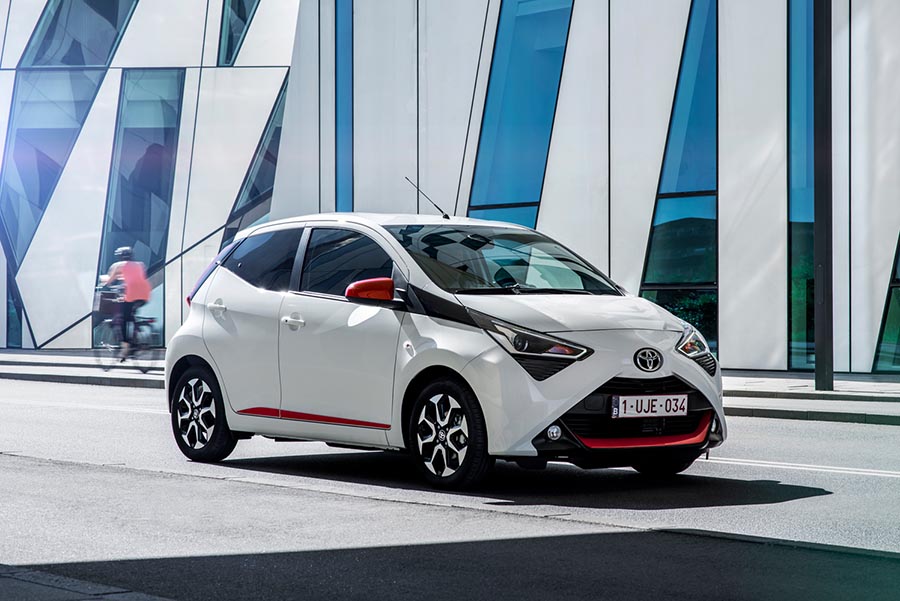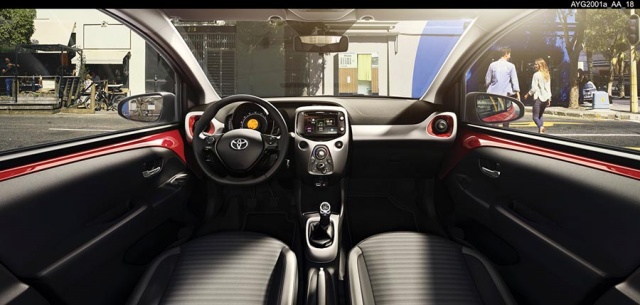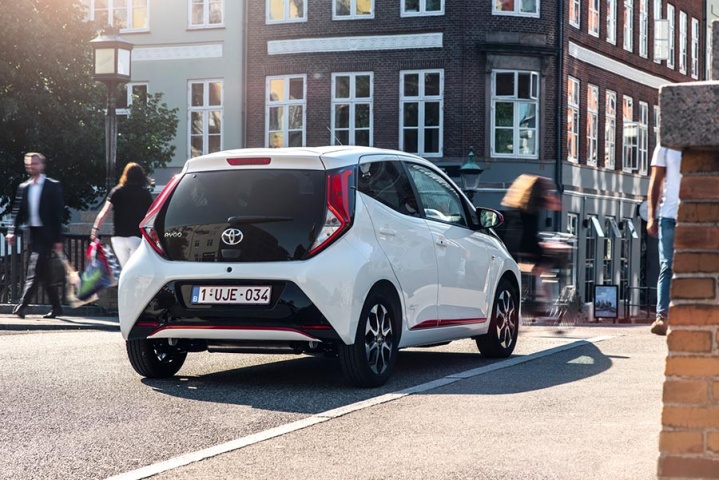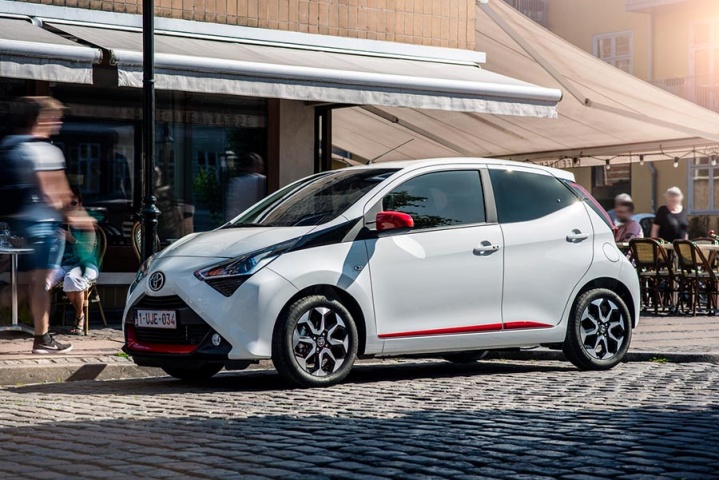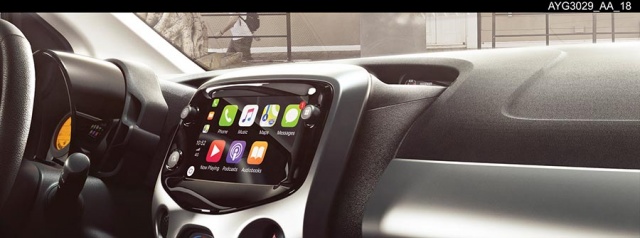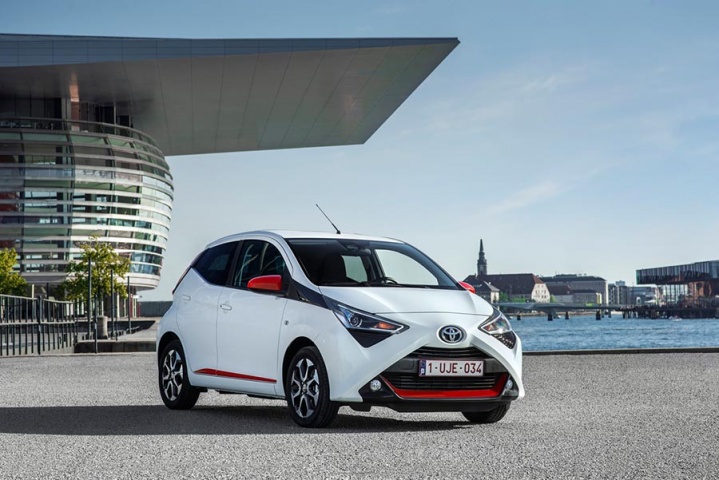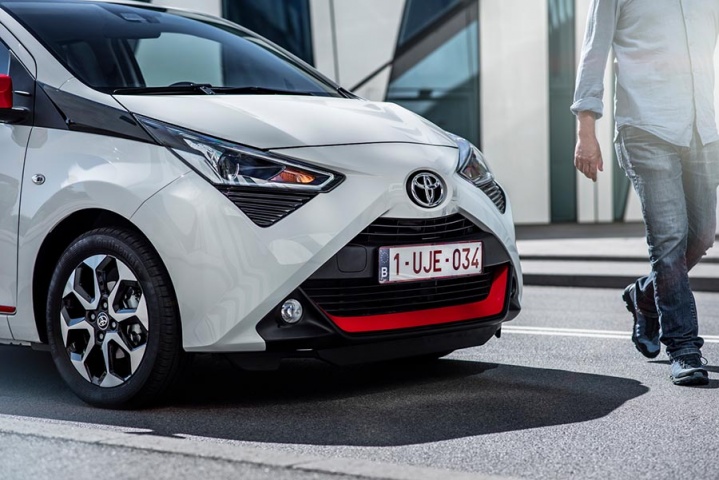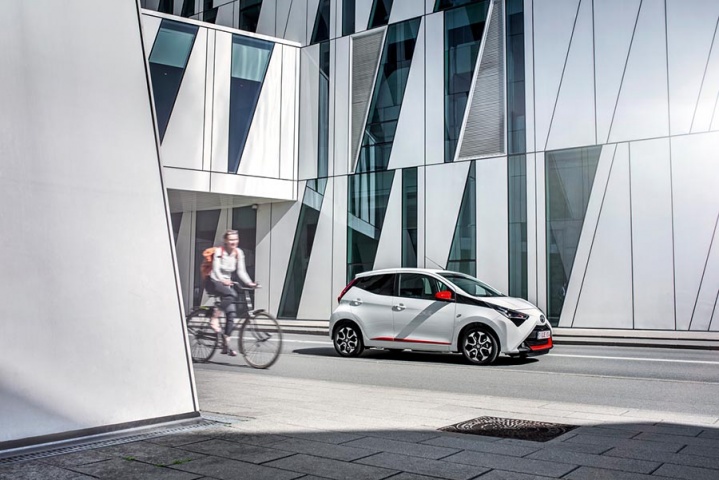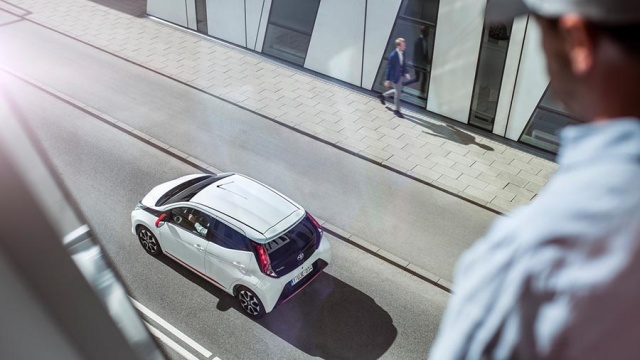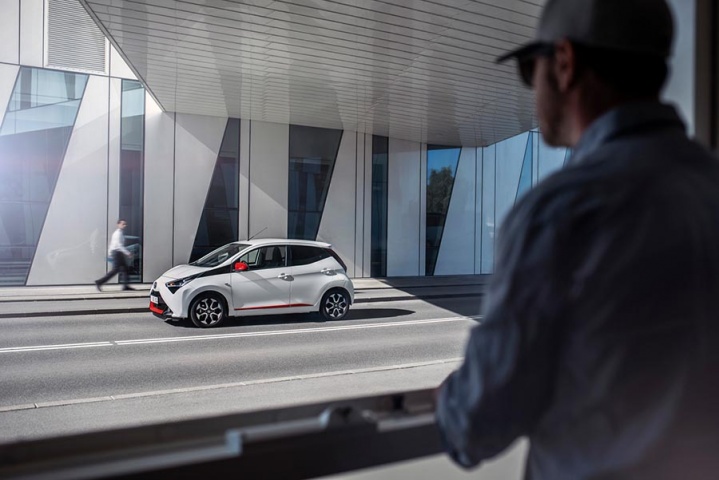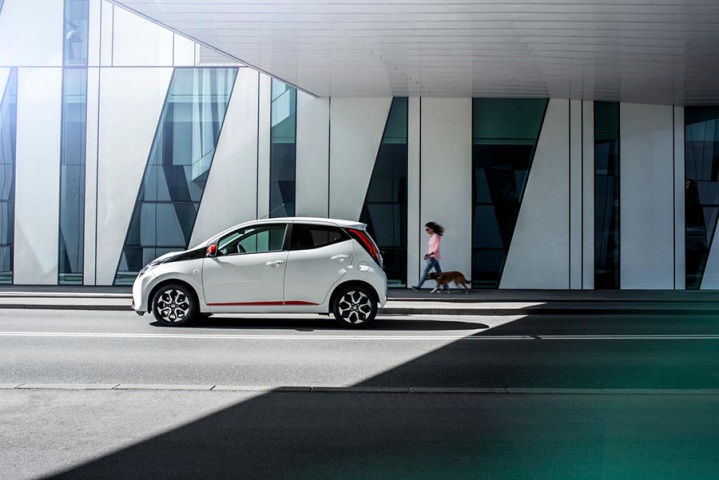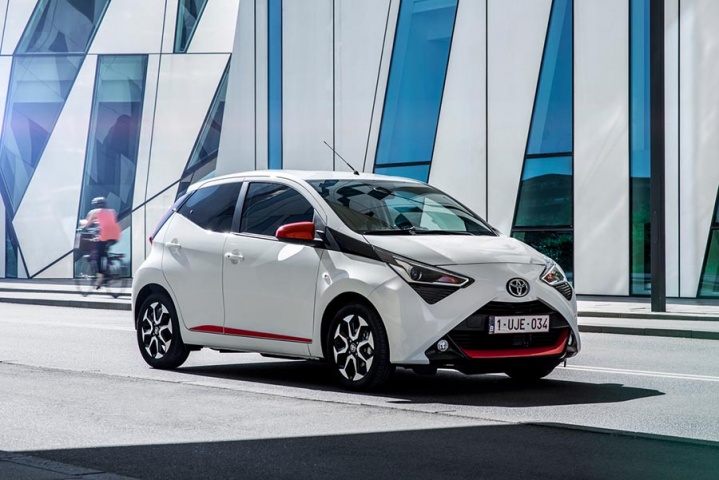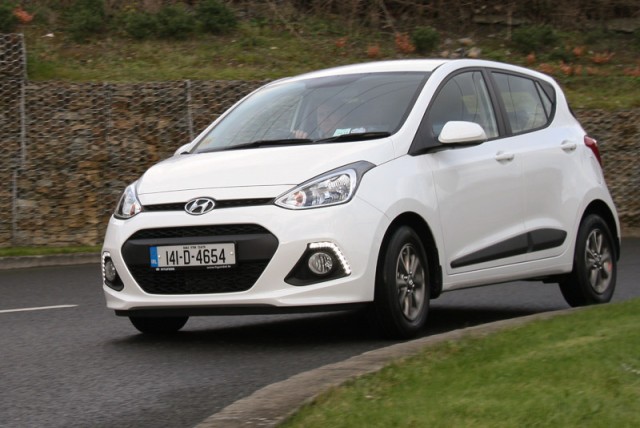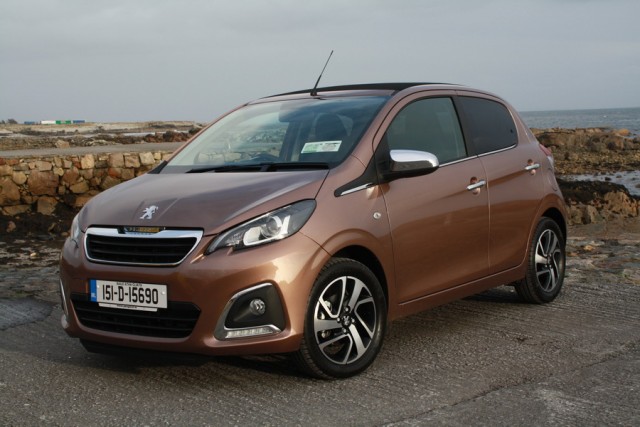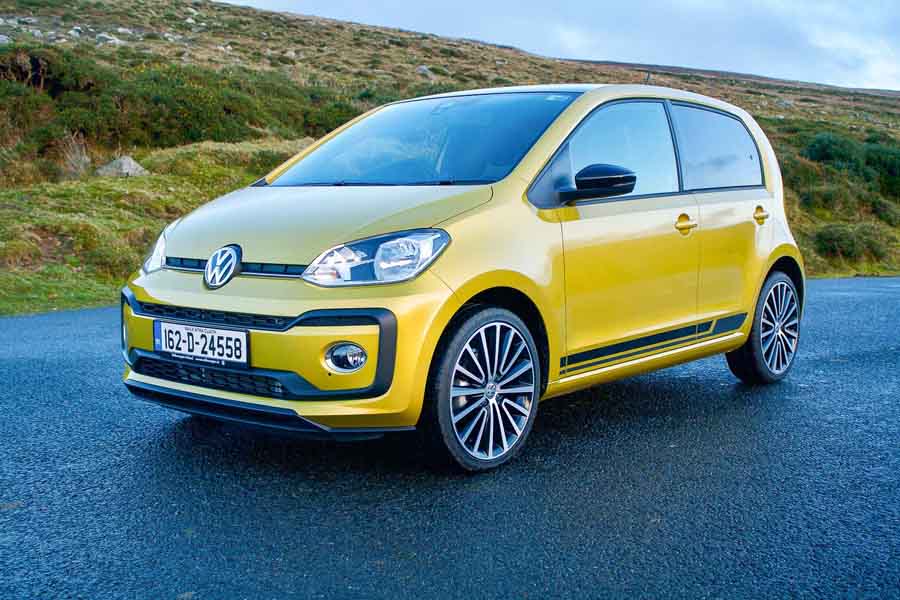The Aygo remains a big-seller across Europe for Toyota, but even with this latest update it's feeling its age. However, the steering and suspension changes are surprisingly good, and it's enjoyable to drive. Pricey now, though.
In the metal
The current Aygo was introduced in 2014, and it came bearing a big 'X' - a distinct cross-shape on the nose, highlighted in contrasting silver or black. While it was perhaps a bit un-subtle, it did at least mean that the Aygo looked distinctly different to the Peugeot 108 and Citroen C1 - both of which it shares an engine, chassis and factory with. For 2018, Toyota has decided that subtlety is back in, so the highlighting of the X-shape is gone, and instead it's a more structural thing; still most certainly there, but with softer outlines, picked up by the new headlights and their LED daytime running light signatures. Successful? Not too bad, but there's no getting away from the fact that underneath the new styling there beats the heart of a car first built in 2005.
That is especially noticeable on the inside. Toyota has upgraded the instrument pack (a single 'combi-meter' perched high, Fiat 500-style) with a new background graphic styled to look like the turbine blades of a jet engine, but the central digital display, which has all the sophistication of a 20-year-old Casio, dates it badly. In the centre of the dash, more effort has been made with a new seven-inch touchscreen, which has been made for the Aygo by Pioneer. It's a good system and on top-grade models comes with Apple CarPlay and Android Auto for connecting your phone, but you will need to spend a considerable amount over the price of a basic Aygo to get it. The rest of the cabin is a very mixed bag. No-one doubts Toyota's commitment to quality and reliability, but the dour grey plastics of the Aygo's cabin, and the clatter as you close the doors don't convince. At least the front seats are generous in comfort and space terms, but rear seat passengers are short-changed and the boot, at a mere 168 litres, is smaller than some gym bags.
At least you can enliven the style (again, if you're prepared to pay). Toyota says that, in a European sense, Aygo buyers flock to the car (and some 75,000 of them did last year) because they prioritise style above all else in the segment. Not so sure that's the case in Ireland (where surely economy and cheap running costs rule), but you can certainly make your Aygo stand out if you like. The optional 'Magenta Fizz' metallic pink paint job (with contrasting black roof) will scorch the eyes out of the heads of unsuspecting passers-by, but thankfully there are some classier black-blue-silver mixes that lend the Aygo a more sophisticated bent. A full-length sunroof (called the 'Funroof') is an option, and you can jazz the Aygo up further with stickers and contrast-colour panels under the headlights.
Driving it
Considering that the market research points to style over all as the buyers' main concern in this class of car, it's something of a surprise just what a deep dive the Toyota engineers have essayed into the Aygo's mechanicals. The suspension and steering seem to have only had, on paper, a minor once-over, but the result is quite distinct. New software for the steering has given the Aygo's wheel a welcome dose of weight and feel and, as a result, it's surprisingly good fun to drive. Not a hot hatch, certainly, but equally not bad for a small, cheap car such as this. The suspension is merely tweaked, rather than changed, but again the results are quite good - city lumps and bumps are well suppressed, but the Aygo isn't left feeling floppy or overly-soft when you're on bigger roads.
In fact, it's quite refined. Toyota has added extra sound-deadening material behind the dash, in the door cards and in the windscreen pillars - and it shows. Noise levels are entirely tolerable at a motorway cruise and, combined with the comfy front seats, that makes the Aygo a surprisingly good long-haul car for one so small.
The engine has been given a major upgrade, although that's perhaps not shown in the on-paper figures. A rise of 2hp to 72hp overall seems like a poor payback for such efforts as a new fuel injection system, a new exhaust gas recirculation system, re-shaped combustion chambers, new pistons, a higher compression ratio and a smattering of DLC (Diamond-Like Coating) to cut down on friction. Most of that is aimed at efficiency, rather than performance, though. For some versions of the Aygo, Toyota quotes a 3.8 litres per 100km fuel consumption figure, although our test car did slightly worse off than that thanks in part to larger (we say larger, they're 15-inch diameter) alloy wheels. That's 74mpg, but as ever you'll probably struggle to get that in real life. Our average over a day's driving on motorways, traffic-strangled city streets and some rural roads was 5.3 litres per 100km, or 53mpg. Mind you, it was warm and we had the air conditioning on a lot.
In performance terms, few glaciers will feel threatened by the Aygo's 13.8-second 0-100km/h time, but at least you'll be able to beat an old Nissan Serena van away from the lights. Actually, once you're up and running, performance isn't bad and as with so many three-cylinder engines, it pulls nicely with a pleasing, throaty warble under heavy loads.
What you get for your money
There is one big problem for the Aygo - the 'big ticket' items mean it has become quite expensive. Other markets get a basic Aygo that is a very, very cheap car, but that does mean it's also bare of equipment. If you want to get items like the big screen with Apple CarPlay, or the Safety Sense pack (which includes automatic emergency braking if it detects that you're going to rear-end another car, and a lane-departure warning) then you need to upgrade to a quite highly-specced model, which is obviously Toyota Ireland's thinking, and hence the Aygo now starts at €14,355. But at that point you could be better off buying the bigger Yaris altogether - after all, the whole idea of the Aygo is that it's tiny, cheap, costs half-nothing to run and will be as reliable as the day is long, but the tempting extra toys on show here mean that it's losing its cheap-and-cheerful edge.
Summary
The Toyota Aygo is feeling its age inside, and fresher rivals are also far more practical. Plus, the price has just racked up too much now. However, the update runs a little deeper than we had been expecting, and it really is surprisingly good to drive. It should be utterly reliable too, and cost you little more than pocket money to run.

